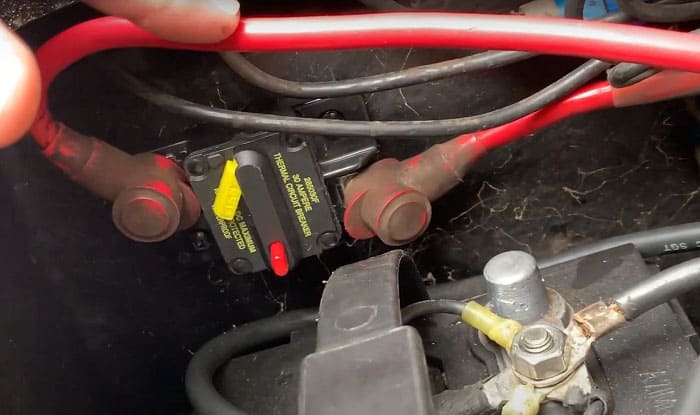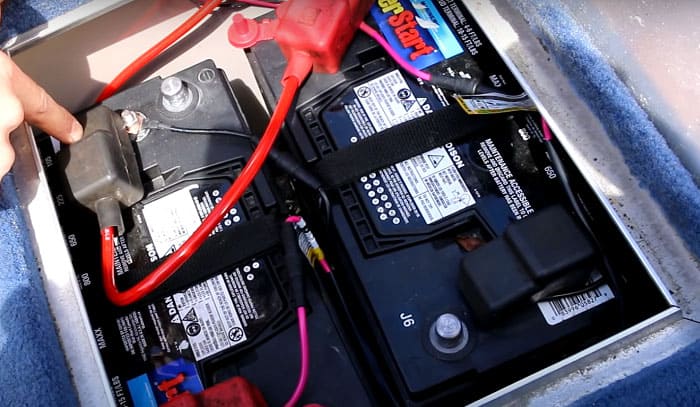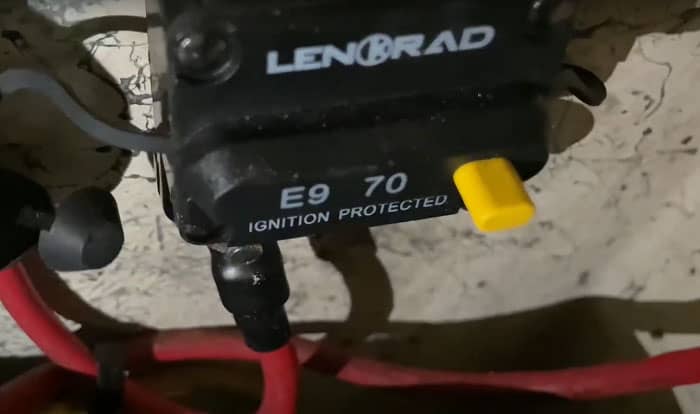Circuit breakers are important for setting up a trolling motor. If you are looking for information to buy a trolling motor or if you’ve already bought one, you’ve probably heard or read as much. But why is a circuit breaker for trolling motor important in the first place?
In this short article, we’ll take a closer look at circuit breakers for trolling motors, including some important things to know when setting them up. We’ll also briefly explore an alternative to the trolling motor breaker, so be sure to keep reading.
Table of Contents
Circuit Breakers
If you’ve experienced losing an appliance to an electrical surge such as one resulting from lightning, it will be easy to appreciate what a circuit breaker does. It protects appliances and electrical devices from damage by cutting off power when there is excess electricity, as in an electric surge.
By preventing damage to the trolling motor, it’s already worth the money to invest in a circuit breaker regardless of boating regulations and requirements. A circuit breaker will always be much cheaper than any trolling motor after all.
Setting up the circuit breaker can be complicated, however, and if you’re not confident about doing it yourself, it’s better to have a professional set it up for you. Let’s take a simplified look at how a circuit breaker works.
How Circuit Breakers Work
Electricity flows in a closed circuit, meaning there needs to be a continuous flow of electric current. When this circuit is broken, the flow of electricity is disrupted. An electric switch works this way, and so does a circuit breaker.
A circuit breaker works by automating the opening or discontinuation of an electrical circuit in order to stop the flow of electricity. This is done to prevent damage to a device that consumes electricity for its operation. Circuit breakers also protect against electrical surges and short circuits.
For trolling motors, the amount of electricity consumed is determined by the need for power. Depending on how much thrust is needed, more power is consumed. However, if there is too much electricity, it can result in damage to the motor.
We use a trolling motor circuit breaker to prevent potential damage to the motor in case of a short circuit or if the motor starts demanding too much electricity. Getting stuck in obstacles like rocks may result in the boat motor overperforming and overheating, which is effectively prevented by a circuit breaker.
What You Need to Know When Selecting Breakers
When choosing and setting up a trolling motor circuit breaker, there are a few things you need to consider. These are amperage, voltage, wire gauge, and thrust of the trolling motor.
The ampere or amp is a unit of measure for electric current. Simply put, this serves to tell us how much electricity is used or the capacity of electricity of the motor or circuit breaker.
Voltage is another important aspect of electricity, but for the sake of keeping things simple, volt or VDC in this case will be something we’ll look at to match the voltage of the circuit breaker to that of the battery. Batteries for trolling motors are 12 volts each, and we use multiple batteries when we need a higher voltage.
Wire gauge refers to the size of wires measured with the AWG unit. Wire gauge matters when setting up a circuit breaker because using the wrong size can cause a short circuit, so be careful with this if you choose to set it up yourself.
For example, you may have the correct size circuit breaker for 12v trolling motor but if the wrong wire gauge is used, problems may still arise.
Thrust refers to the propulsion power of your trolling motor. It is important to know how much thrust a circuit breaker is capable of imparting, and using the wrong type of circuit breaker can cause the motor’s thrust to diminish, resulting in loss of performance.
Types of Circuit Breakers
There are two main types of circuit breakers for trolling motors, the 50 Amp and the 60 Amp. Each of these is further subdivided into 12VDC, 24VDC, and 36VDC. The highest capacity circuit breaker for 50 Amp types is the 48VDC, while the 60 Amp breakers have the 2 x 24VDC.
The wire gauge needed for circuit breakers varies depending on amp draw and wire length. Usually, a higher amp draw or longer wire length results in the need for a bigger diameter wire.
50 Amp Type
The 12VDC can handle maximum amp draws of 30 and 42, as well as 30 lbs and 40 to 45 lbs of thrust respectively. The appropriate wire gauge is dependent on the length of wire used, where 10 AWG is needed for 10 feet of wire for 30 amp and 8 AWG for 10 feet of wire for 42 amp.
The 24VDC has a max draw of 42 amps along with 70 lbs of thrust needing 10 AWG for 10 feet long wires. On the other hand, the 36VDC has a max draw of 46 amps and accommodates 101 lbs of thrust, but 8 AWG is needed even for wires as short as 5 feet.
The 48VDC has a max amp draw of 40VDC and is compatible with E-drives which cannot be accommodated by the lower VDC types.
60 Amp Type
The 60 amp’s 12VDC variant has a max draw of 50 amp along with support for 50 and 55 lbs of thrust. It requires 8 AWG for 5 feet and 2 AWG for 25 feet of wire. The 24VDC has a max draw of 56 amps along with 80 lbs of thrust while needing 8 AWG for up to 15 feet of wire.
The 36VDC supports 112 lbs of thrust with its max draw of 52 amps and needs 8 AWG from 5 to 25 feet of wire. The double 24VDC is made for bigger motors with a max amp draw of 116 and uses two 24VDC circuit breakers.
Circuit Breaker vs Fuse
A circuit breaker and an inline fuse for trolling motor both work in a similar way, and one can be an alternative to the other. Both can cut off the electric supply before an excessive amount of power ends up damaging the motor. However, there are a few key differences between them.
When a surge of electricity runs through a circuit, the fuse blows and cuts off the flow of electricity. One key difference is that to get the circuit up and running, the old fuse needs to be replaced with a new one. For circuit breakers, we just need to flip a switch.
Another point of difference is that fuses do tend to respond faster in certain situations due to their low breaking capacity, though for most situations, there is barely any noticeable difference. Fuses are also cheaper compared to circuit breakers.
While both are effective in preventing damage to the trolling motor, the circuit breaker is preferred over the trolling motor fuse because it is easier to use and is reusable.
Conclusion
Now you have a better understanding of the circuit breaker for trolling motor and why it is used. While this is a complicated subject, we hope this introduction is able to jump-start the learning process for you and help you make better-informed decisions regarding your boating activities.
Did you find this article helpful? If you did, please share it with others as well, and please leave your comments and suggestions below.
Remember to boat safely.

“My intention from the first day establishing Boating Basics Online is to provide as much help as possible for boaters who want to experience a first safe and convenient trip. So feel free to join us and share your beautiful journeys to the sea!”



